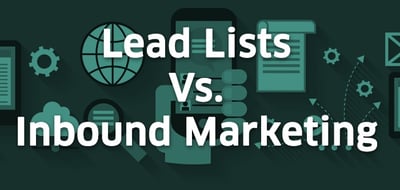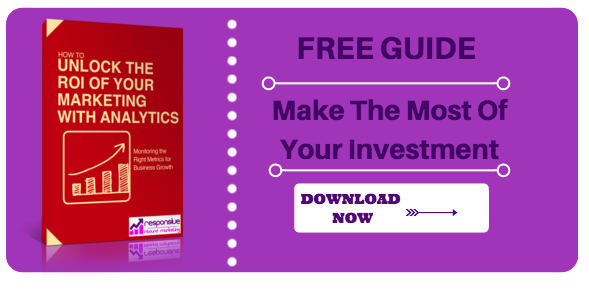Inbound marketing has the reputation for delivering a high return on investment. Although measuring ROI is not just about the financial investment; it is also about the time and effort that goes into executing your campaigns. So how does this compare to purchasing and using lead lists? And does inbound always outscore more traditional outbound methods?
Inbound Marketing for the Win
Buying and using lead lists is a form of outbound marketing—researching out to cold leads hoping that they will be interested. This is in sharp contrast to the ‘if you build it, they will come’ inbound methodology of providing quality content to attract prospects.
“Inbound marketing is about attracting qualified leads by creating content designed with your target market in mind…regardless of company size or budget inbound campaigns achieve a higher ROI than outbound, per HubSpot” (Iron Paper).
Inbound marketing is often less expensive because your spending comes in the form of creativity. You don’t have to have an enormous budget to have effective campaigns—your website, blog, and social media sites are prime examples of getting information out without spending a lot of money.
Outbound and Out
Lead lists are names and email addresses that you purchase or rent with the intent of sending information to. Twenty years ago this was standard operating procedure for marketers; however, times, technology, and approaches have changed.
While lead lists can offer some good prospects, they can also be problematic. Lists often contain bad leads and old email addresses. This affects your bottom line and ROI since a list of 500 names may actually only be 50 percent accurate. And, lists are not cheap.
At a recent B2B roundtable, the Brian Carroll, Executive Director of Revenue Optimization at MECLABs stated that “a bad lead list is actually 60% more costly than a good lead list” and “the difference between the best- and worst-performing lists was almost $600 per lead” (Radius).
Furthermore, sending out an email to recipients who did not ask to receive it is considered spam, which is illegal. Besides the monetary impact, this can negatively affect your credibility, so if you do acquire a lead list be sure that if is an opt-in list of people who are interested in receiving marketing. Or, better yet, build your own list of qualified leads.
In, Out, and All Around
While industry data enforces that inbound efforts achieve higher ROI than outbound, they also emphasize the importance of measuring return. As HubSpot stated in the State of Inbound report, “best-in-class marketers track ROI, prove it’s growing each year, and secure increased budget as a result.” And, of all the companies surveyed, every one—regardless of the actual amount spent—was three times as likely to see a higher ROI on inbound marketing campaigns than on outbound.
So, while there is still a place in marketing for lead lists, particularly in larger firms with higher budgets, it’s critical to track and measure the ROI of all marketing efforts so that you can assess what works best for your specific business and budget.
For help calculating your ROI, check out this free guide on how analytics can help.
